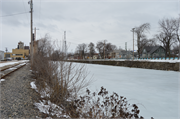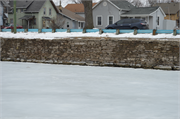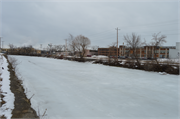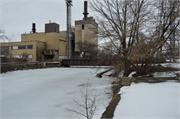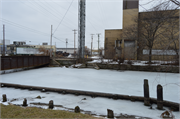Property Record
Little Lake Butte Des Mortes to Racine Street Bridge
Architecture and History Inventory
| Historic Name: | Menasha Canal |
|---|---|
| Other Name: | Menasha Canal |
| Contributing: | |
| Reference Number: | 69953 |
| Location (Address): | Little Lake Butte Des Mortes to Racine Street Bridge |
|---|---|
| County: | Winnebago |
| City: | |
| Township/Village: | Menasha |
| Unincorporated Community: | |
| Town: | 20 |
| Range: | 17 |
| Direction: | E |
| Section: | 22 |
| Quarter Section: | |
| Quarter/Quarter Section: |
| Year Built: | 1856 |
|---|---|
| Additions: | |
| Survey Date: | 19962024 |
| Historic Use: | canal |
| Architectural Style: | NA (unknown or not a building) |
| Structural System: | |
| Wall Material: | Stone - Unspecified |
| Architect: | Fox and Wisconsin River Improvement Co. |
| Other Buildings On Site: | |
| Demolished?: | No |
| Demolished Date: |
| National/State Register Listing Name: | Not listed |
|---|---|
| National Register Listing Date: | |
| State Register Listing Date: |
| Additional Information: | A 'site file' exists for this property. It contains additional information such as correspondence, newspaper clippings, or historical information. It is a public record and may be viewed in person at the Wisconsin Historical Society, State Historic Preservation Office. Located at the southern edge of mainland Menasha, the Menasha Canal is located along a route that roughly parallels the Fox River between Little Lake Butte Des Morts to the west and the Racine Street Bridge to the east (beyond which the Fox River meets Lake Winnebago). The V-shaped canal is approximately 4,350 feet in length. The width of the canal varies from approximately 75 feet to 150 feet throughout its length with a wider basin located at the west end of the canal near the lock (see AHI 66984 for Menasha Lock). Canal walls are of stone construction with some segments of the canal featuring natural, sloped banks (stone riprap lines the banks of the basin). The Fox and Wisconsin Improvement Project was conceived in the late 1840s as a means of providing an economical and efficient means of shipping lead from the mines of southwestern Wisconsin to Lake Michigan ports and on to commercial centers in the eastern United States. Following a survey of the natural water facilities at Menasha, the Improvement Project’s chief engineer reported that construction of a lock and canal would provide the necessary means for navigation around the rapids of the Fox River’s north channel. By 1849, construction of the canal was underway along a route that paralleled the north channel between mainland Menasha and Doty Island. By 1850, a crib dam had been completed across the channel and two-thirds of the canal had been excavated. By 1856, the canal had been sufficiently completed to allow a small steam vessel to travel through the canal and down the Fox River to Green Bay. However, additional dredging was needed to allow for the passage of larger commercial vessels. When the Fox and Wisconsin River Improvement Company failed to acquire the funding needed to complete this work, it declared bankruptcy in 1866 and was reorganized as the Green Bay and Mississippi Canal Company by a group of eastern bond-holders. By 1870, the reorganized company had done little to improve the waterway and the federal government offered to purchase the group’s interest. This transaction was completed in 1872, following which time the federal government assumed control of the canal with remaining work completed by June 1876. |
|---|---|
| Bibliographic References: | Eligibility Studies for Mensha, WI - available in Mensha City Hall Site File, WHS HPPH |
| Wisconsin Architecture and History Inventory, State Historic Preservation Office, Wisconsin Historical Society, Madison, Wisconsin |

